In order to present Kirchhoff’s voltage law, we must introduce the concept of a “loop”.
[stextbox id=’info’ caption=’Loop’]Starting at any node n in an electric circuit, we form a loop by traversing through elements and returning to the starting node n, and never encountering any other node more than once.[/stextbox]
Since energy must be conserved when a charge goes around a loop, the energy given up by the charge equals the energy it gains. The same energy-conservation principle would apply if you carried a rock over a hill and back to where you started.
Kirchhoff’s Voltage Law expresses conservation of energy in terms of voltage rises and drops around a loop in a circuit.
[stextbox id=’info’ caption=’KVL Definition’]The sum of the voltage drops around any loop equals the sum of the voltage rises.[/stextbox]
An alternate statement of KVL can be obtained by considering voltages across elements that are traversed from plus to minus to be Positive in sense and voltages across elements that are traversed from minus to plus to be negative in sense (or vice versa). Under this circumstances, KVL has the following alternative form:
[stextbox id=’info’ caption=’KVL Alternate Form ‘]The algebraic sum of all voltage drops around any loop equals zero.[/stextbox]
Specifically, this statement becomes,
\[\sum V=0\]
By applying this form of KVL to the circuit shown in figure 1, and selecting a traversal from plus to minus to be positive in sense, around the loop, we get
$E-V=0$
Figure.1: Kirchhoff’s Voltage Law Circuit
- You May Also Read: Kirchhoff’s Current Law
Kirchhoff’s Voltage Law Solved Example
Find V1 and V2 using Kirchhoff’s voltage law.
Solution
By using Ohm’s Law,
${{V}_{1}}=2i$
and
${{V}_{2}}=-3i$
Using KVL;
$-20+{{V}_{1}}-{{V}_{2}}=0$
$-20+2i+3i=0$
$i=4A$
So,
${{V}_{1}}=8V$
${{V}_{2}}=-12V$
Application of KVL
A very simple application of KVL is to combine all voltage sources in series.
In above circuit, we observe that polarity of V1 and V2 is same as supply voltage Vab so we consider them positive voltage while V3 polarity is opposite to supply voltage. So, the final resultant voltage will be;
${{V}_{ab}}={{V}_{1}}+{{V}_{2}}-{{V}_{3}}$
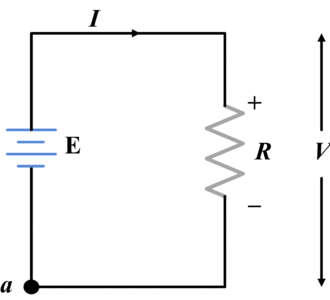
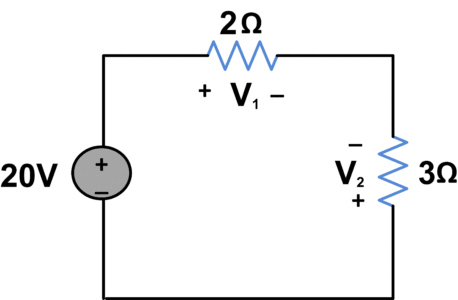
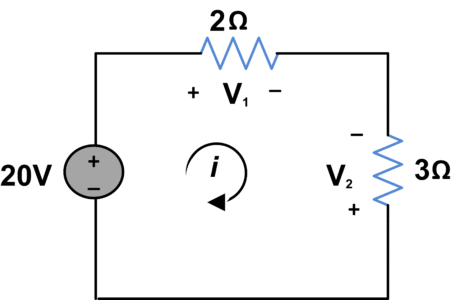
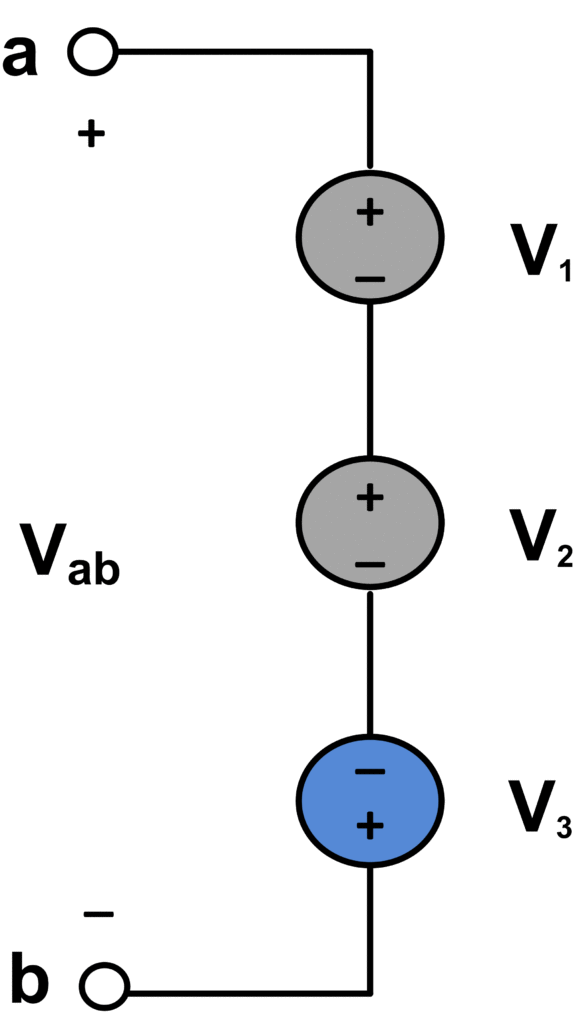
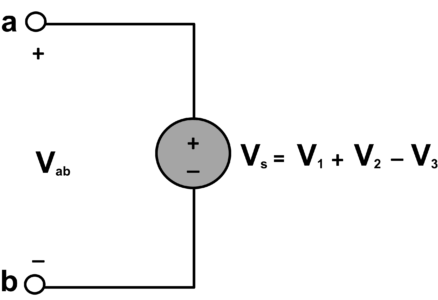
2 thoughts on “Kirchhoff’s Voltage Law (KVL)”